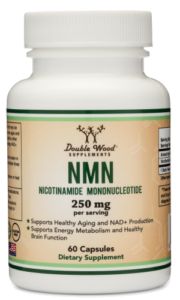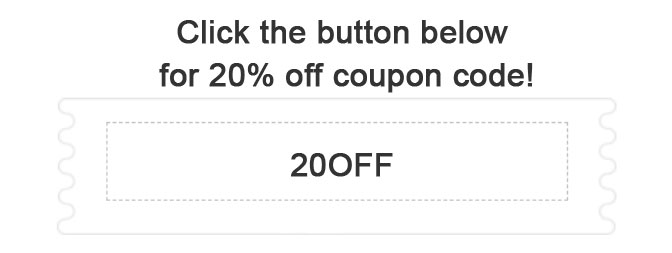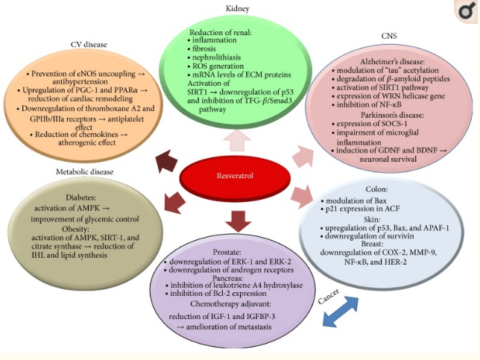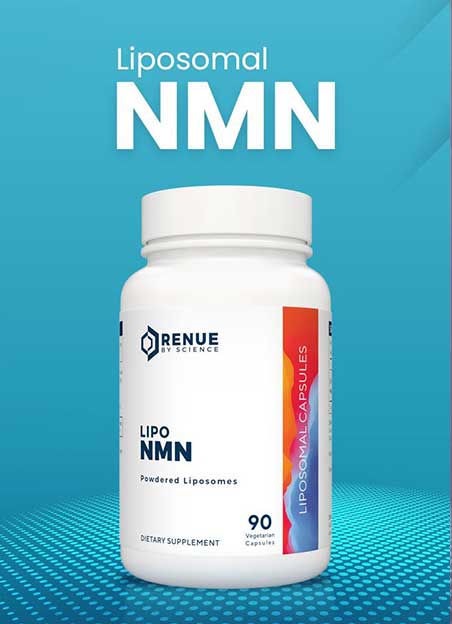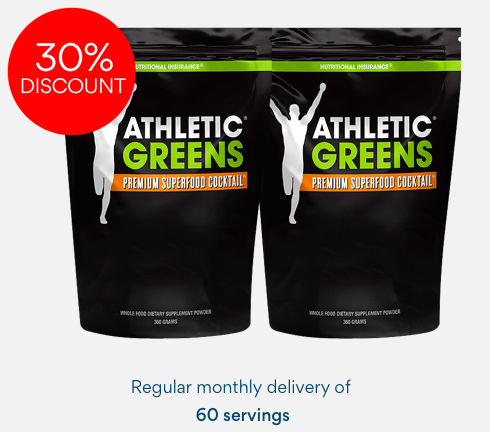NAD+ Precursor Products Review 2022
Disclosure: This post contains affiliate links. If you buy through my link or use my codes, I will earn commissions.
There are a lot of NAD+ precursors available in the market, with NMN being the most popular due to the preference of Dr. David Sinclair. Since Dr. Sinclair doesn’t endorse any particular brand of NMN, it helps to know more about the quality of each. We have compiled a list of good quality NAD+ precursors you can buy from the market and ranked each one accordingly. 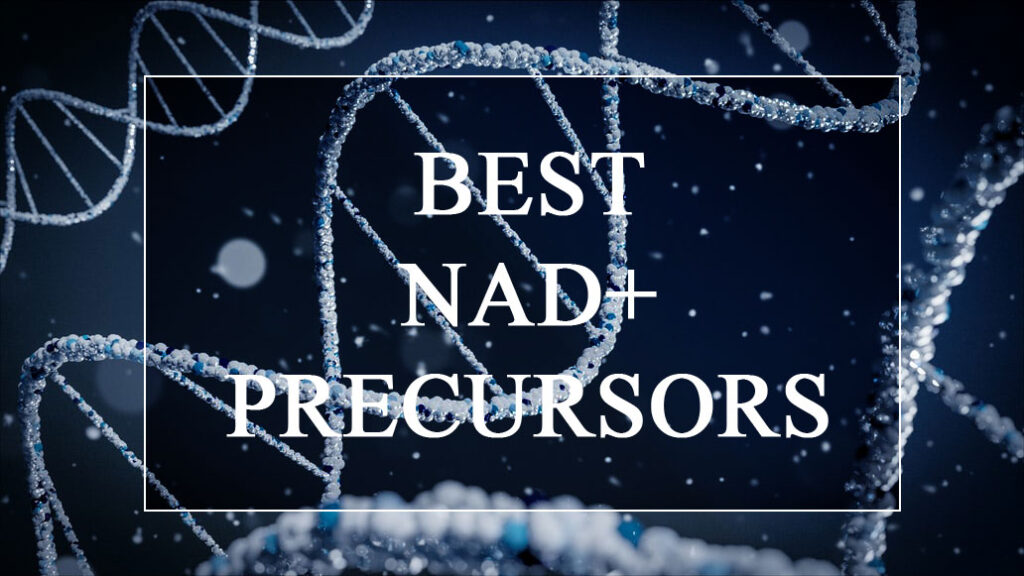
David Sinclair Recommends GMP NMN
David Sinclair, Ph.D., A.O. is a Professor in the Department of Genetics and co-Director of the Paul F. Glenn Center for Biology of Aging Research at Harvard Medical School. He is best known for his work on understanding why we age and how to slow its effects. Although Sinclair never recommends a particular NNM company, he does recommend GMP NMN. GMP refers to the Good Manufacturing Practice regulations promulgated by the US Food and Drug Administration. These regulations, which have the force of law, require that manufacturers, processors, and packagers of drugs, medical devices, some food, and blood take proactive steps to ensure that their products are safe, pure, and effective.
LIPO NMN – Powdered Liposomal NMN
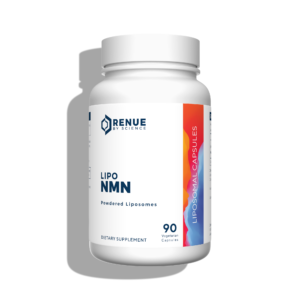 The first product on this list is definitely LIPO NMN by Renue By Science – a leading company in anti-aging products. Renue By Science has a range of products in the NAD+ precursor category.
The first product on this list is definitely LIPO NMN by Renue By Science – a leading company in anti-aging products. Renue By Science has a range of products in the NAD+ precursor category.
The company is best known for its liposomal technology that delivers the product directly to the cells by encapsulating the ingredients in tiny liposomal-based substances. Liposomes are made up of the primary building blocks of cell membrane: phospholipids. That allows the ingredient to be delivered to the cell relatively easily than traditional methods and increases its bioavailability. LIPO NMN comes in a bottle containing 90 capsules with each capsule containing highly concentrated 250 mg powdered liposomal NMN. The bottle costs $95.94. Since NMN is the most efficient of all NAD+ precursors discussed above, and liposomal technology makes it highly bioavailable, LIPO NMN is a perfect choice to increase NAD+ levels in the body. Renue by Science products are GMP certified and is the only NMN company that independently tests the final product, providing a batch number for verification on each bottle. The product page has certificates from third-party labs that show that the product is free from impurities, contains the number of ingredients written on the label, and meets the standards for purity and strength. We awarded Renue by Science Liposomal NMN our Best Overall NAD+ Precursor for 2022.
NR by Ultra Health
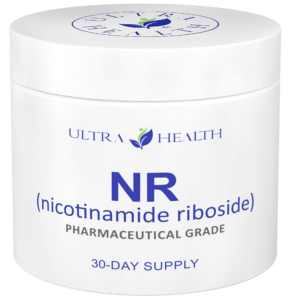 The next product on the list is NR by Ultra Health. The product is available on Amazon. It comes in a bottle of 30 capsules with each capsule containing 300 mg of NR. The cost of each bottle is $46.95 but customers can get a discount if they purchase 2 or 3 bottles together. The product page contains certificates from a third-party lab showing results of tests to ensure purity, stability, and the presence of ingredients as per the label. The cost of this product might be lower than the first one discussed but it is also significantly less bioavailable because it does not use liposomal technology. Furthermore, NMN is more efficient than NR so you may need higher doses NR to get similar results. These factors mean that Liposomal NMN is a better overall value.
The next product on the list is NR by Ultra Health. The product is available on Amazon. It comes in a bottle of 30 capsules with each capsule containing 300 mg of NR. The cost of each bottle is $46.95 but customers can get a discount if they purchase 2 or 3 bottles together. The product page contains certificates from a third-party lab showing results of tests to ensure purity, stability, and the presence of ingredients as per the label. The cost of this product might be lower than the first one discussed but it is also significantly less bioavailable because it does not use liposomal technology. Furthermore, NMN is more efficient than NR so you may need higher doses NR to get similar results. These factors mean that Liposomal NMN is a better overall value. 
B-3 Nicotinamide 500 mg
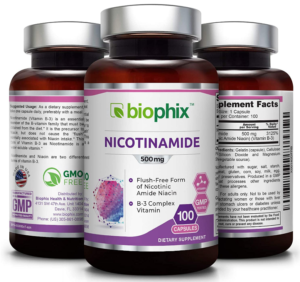 The third item in this product list is the Nicotinamide supplement by Biophix. The product comes in a 100-capsules bottle with each capsule containing a total of 500 mg NAM. The cost of 2 bottles pack is $47.89. The product claims to be a flush-free form of NAM. However, the product page does not have any third-party lab testing certificates to verify the claims. The product has number of positive reviews from 681 global reviewers, though.
The third item in this product list is the Nicotinamide supplement by Biophix. The product comes in a 100-capsules bottle with each capsule containing a total of 500 mg NAM. The cost of 2 bottles pack is $47.89. The product claims to be a flush-free form of NAM. However, the product page does not have any third-party lab testing certificates to verify the claims. The product has number of positive reviews from 681 global reviewers, though. 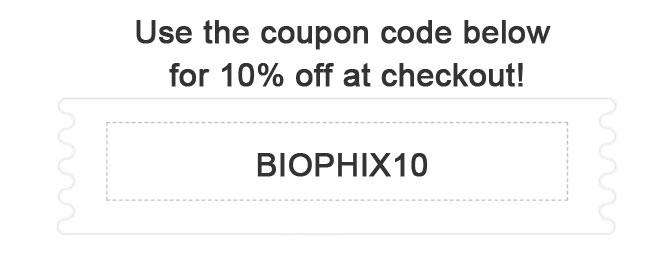
ProHealth Longevity Pure NMN Pro Powder
The fourth product on the list is ProHealth Longevity Pure NMN Pro Powder. This is an NMN-based product that delivers NMN to the cells in order to convert to NAD+.
This product is administered by dissolving directly into the mouth to avoid digestion in stomach acids. It dissolves directly in the blood vessels in the mouth and under the tongue, bypassing the whole gastrointestinal tract.
It is different from the liposomal delivery system discussed above, so it has a relatively lower absorption rate and less bioavailability. However, its absorption rate is still better than the ordinary NMN products that pass through the digestive system.
The presence of NMN in this supplement allows the user to reap the anti-aging benefits of NMN. The website provides safety certificates from third-party laboratories to ensure safety and effectiveness for their customers. 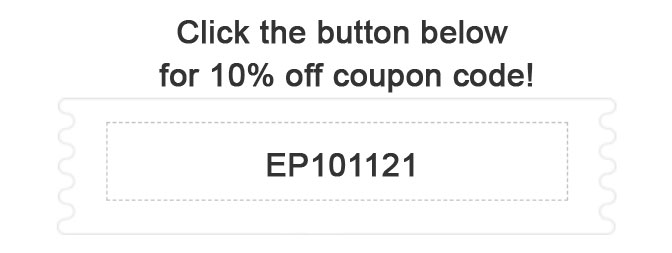
Double Wood NMN Capsules
The fifth and last item on the list is Double Wood NMN Capsules Supplements. These supplements contain NMN in the form of capsules. The delivery system of these capsules is traditional. That means that these supplements do not use liposomes to deliver NMN to the body and must pass through the GI tract, which means that less of it gets to the tissues intact.
The absorption rate of these supplements might be low, so it is recommended that you take up to 8 capsules throughout the day. At a minimum, the recommended dosage is two per day, with one capsule in the morning and one in the evening.
The low absorption rate is reflected in the price of this product. It is available at $48.95 per bottle of 60 capsules. Each capsule contains 250 mg.
There is a discount available for the customers who buy multiple bottles or opt for a subscription. The lower cost of this product might make it more attractive than other options.
Their website also provides safety certificates from third-party laboratories to ensure the safety of their products for the user.
Frequently Asked Questions
1. How Safe is NMN?
While the research on NMN is only a few years old, both human and animal trials have proven NMN to be safe.
Multiple independent studies have demonstrated that NMN is not toxic and perfectly safe to use.
It is important to choose the products that are free of contaminants and come from vendors that are reputable in the market.
2. Is Nicotinamide the same as Niacinamide?
Yes. Niacinamide is another name of Nicotinamide (NAM). Both are the exact same compounds.
3. Are Niacinamide and Niacin also the same thing?
No. Niacinamide (also known as NAM or Nicotinamide) is different from Niacin (or NA). Both are different forms of vitamin B3. Between the two, Niacin is known to cause skin flushing while Niacinamide does not. The third product suggested in this article is Niacinamide, not Niacin.
4. Which NAD+ precursor is right for me?
Different people take NAD+ supplements for different reasons. You might be better off making an informed choice yourself. However, NMN seems to be the leading choice of experts like David Sinclair these days.
5. Can I take NAD+ precursors if I am pregnant?
It is recommended to take your doctor’s advice before taking these supplements. Many of these supplements come with a warning suggesting pregnant women to not take the supplements. The professional opinion of doctors who are familiar with your specific condition should always be sought whenever there is any uncertainty.
NAD+ Explained
Research has established that NAD+ is present in all living things and is essential for a range of important functions in our bodies. In essence, NAD+ is a helper coenzyme that helps facilitate a number of processes for mitochondria. It helps in converting food into energy while also playing a vital role in sustaining DNA integrity. It helps sustain the processes that ensure that our bodies are safe from diseases and aging due to proper cell function. In strictly chemical terms, NAD+ acts as an oxidizing agent and gets reduced by accepting an electron from other molecules to form NADH. NADH then has the ability to donate the newly acquired electron and act as a reducing agent. Transferring electrons is the main function of NAD in our bodies. However, as we age, the amount of NAD available to our bodies gets reduced because of the imperfect recycling system of NAD+. NAD+ precursors are present in our diet but they are not enough to sustain the supply of NAD+ due to their lower bioavailability. Thus, our NAD+ levels decline and our bodies experience aging. This leads to a number of age-related alignments such as cancer, neurodegenerative disorders, cardiovascular diseases, bone dysfunctions, etc.  This is why anti-aging research is now focusing on various ways to increase NAD+. This most straightforward way to do so seems to be increasing our intake of NAD+ precursor through more bioavailable methods. The most commonly used NAD+ precursors are NMN, NR, NAM, and NA.
This is why anti-aging research is now focusing on various ways to increase NAD+. This most straightforward way to do so seems to be increasing our intake of NAD+ precursor through more bioavailable methods. The most commonly used NAD+ precursors are NMN, NR, NAM, and NA.
NAD+ Precursors Explained
Nicotinamide (NAM)
Nicotinamide is a form of vitamin B3 and has been used as a way of elevating NAD+ levels in our bodies. Sometimes, Nicotinamide is also referred to as niacinamide in order to differentiate it from nicotine. NAM has a lot going on for it, as an NAD+ precursor. It is not only readily available but also has the ability to pass into cells via their membranes. That is why NAM was considered to be the most logical choice for treating the conditions related to brain tissue due to the deficiency of NAD+. The rapid penetration of the blood-brain barrier (BBB) of NAM can be explained by the fact that it can pass through the membrane of cells. This allows NAM to enter the nervous system directly from blood circulation. However, this also means that blood flow can also remove NAM from tissues.  NAM and Nicotinamide Riboside (NR) use the same salvage pathways but NAM stops before NR at the rate-limiting step where NR bypasses to become NAD+. What differentiates NAM from other NAD+ precursors is that it helps salvage the pathway it goes through. When enzymes such as sirtuins consume NAD+ to regulate cellular health, they use the parts they need and send NAM back in the pathway for more production of NAD+. A number of studies have explored tolerance for NAM and found it to be suitable for long-term consumption.[2] [3] [4] It is recommended that NAM be taken in doses of 500 to 1500 mg per day. These studies have also established that the adverse side effects are only reported when NAM is taken in doses high than 3 grams per day.
NAM and Nicotinamide Riboside (NR) use the same salvage pathways but NAM stops before NR at the rate-limiting step where NR bypasses to become NAD+. What differentiates NAM from other NAD+ precursors is that it helps salvage the pathway it goes through. When enzymes such as sirtuins consume NAD+ to regulate cellular health, they use the parts they need and send NAM back in the pathway for more production of NAD+. A number of studies have explored tolerance for NAM and found it to be suitable for long-term consumption.[2] [3] [4] It is recommended that NAM be taken in doses of 500 to 1500 mg per day. These studies have also established that the adverse side effects are only reported when NAM is taken in doses high than 3 grams per day.
Nicotinamide Mononucleotide (NMN)
Among the various NAD+ precursors, NMN stands out the most because it is the most efficient of them all. NMN is a direct precursor to NAD+ because it bypasses the rate-limiting steps that NAM, NR, and NA go through. NMN feeds directly into a single step enzymatic generation of NAD+, thus theoretically producing more NAD+ with less amount of precursor. Unfortunately, the interest has led to numerous fake NMN products now on the market. This video shows how 65% of those sold on Amazon actually had NO NMN in the product at all! As a result, it is very difficult to find a good brand. The godfather of NMN, Dr. David Sinclair, will only say it is important to look for a well known brand, that sells a GMP NMN such as alivebyscience.com. A 2019 study shows that administering NMN through intraperitoneal injections can lead to improvement of NAD+ levels in brain tissue. The study also mapped out a schematic diagram showing the direct and indirect targets for NMN. It showed that NMN inhibited the activity of CD38 and PARP1. Inhibiting the activity of CD38 enzymes reduces the multiple types of myeloma and other cancers. Inhibition of PARP1 is also used in the treatment of many different kinds of cancers. The fact that administering NMN through the intraperitoneal method increases NAD+ levels – along with the identification of a transporter specific to NMN – means that NMN gets actively transported to the cells to get converted to NAD+. This idea is argued in an article by David Sinclair and Lindsay Wu in a 2019 paper where the evidence of an NMN-specific transporter is presented. They argue that Slc12a8, a protein-coding gene found in the gut endothelium, serves as a transporter for NMN. Thus. NMN is a strong contender to be an effective and efficient precursor for NAD+. Arguably, it is the most promising of all of the NAD+ precursors. Human trials for the consumption of NMN have established that it is safe for administration. Studies have also confirmed that our body is easily capable of metabolizing NMN. No significant side effects have been recorded in studies where NMN was taken in doses of 100 to 1200 mg.
Nicotinamide Riboside (NR)
The third precursor on the list is Nicotinamide Riboside (NR). NR has been explored as a possible viable precursor for NAD+ in recent studies. Mehmel and his team provided the state of the research on NR as an NAD+ precursor to boost the NAD+ levels in the body in a research paper published in 2020. However, the study also reported that NR requires unusually high doses to increase NAD+ levels because it tends to be unstable in blood. Meanwhile, more stable precursors like NMN can increase NAD+ in smaller doses. Nevertheless, many studies have explored the safety of NR supplements and found the substance to be safe for both long- and short-term use. Studies have also found NR to be orally bioavailable. Doses of up to 1000 mg were considered to be safe for oral administration of the substance. The following table compares NMN and NR duration and dose for oral administration in clinical trials involving humans.
| Substance | Dose | Duration | Reference |
| NMN | 600-1200 mg/day | 6 weeks | ix |
| NMN | 250 mg/day | 10 weeks | x |
| NR | 250 to 500 mg/day | 8 weeks | xii |
| NR | 500 mg/day | 6 weeks | [14] |
| NR | 10000 mg/day | 3 weeks | [15] |
Niacin and Nicotinic Acid (NA)
The last precursor on the list is Nicotinic Acid (NA) (also known as Niacin). Niacin is a form of vitamin B3 that the body usually makes to help turn food into energy. Other functions of Niacin include keeping the skin healthy, improving the digestive system, and keeping the nervous system active. Most people get enough Niacin from their daily food intake while it is also a part of daily multivitamins. The acidic form of Niacin is NA which is usually used to treat hyperlipidemia. When taken between 1 to 3 grams per day, it reduces low-density lipoproteins and triglyceride levels and boosts high-density lipoproteins (HDLs) levels. That is why NA is associated with an improved LDL: HDL ratio. Studies have shown that people who take Niacin for 10 months, in the dosage of 750 to 1000 mg per day, show an increase in the NAD+ levels in their body. Long-term consumption of Niacin supplements was considered to be safe when taken in this dosage range but serious side-effects emerged when doses were increased in the range of 2 to 6 grams per day. However, the clinical uses of NA are reduced because of the issues related to skin flushing in most of its users. Canada and the US have set the upper limit of 35 mg per day for NA intake because 50 mg dose causes mild skin flush.


